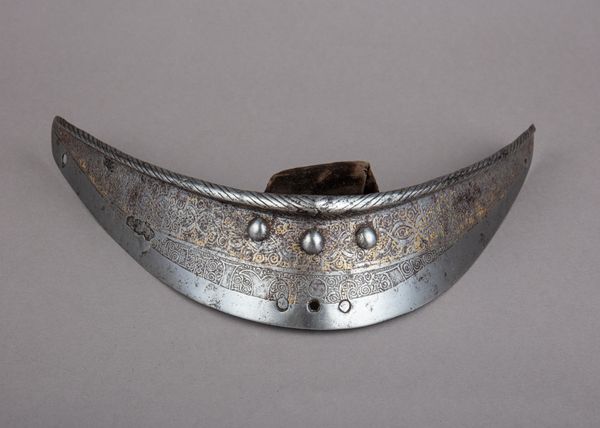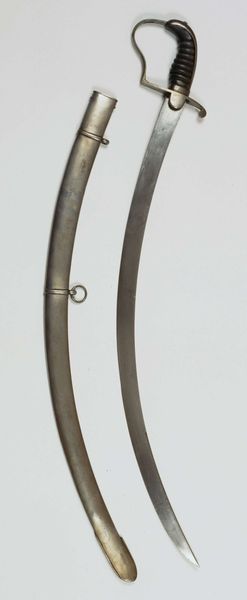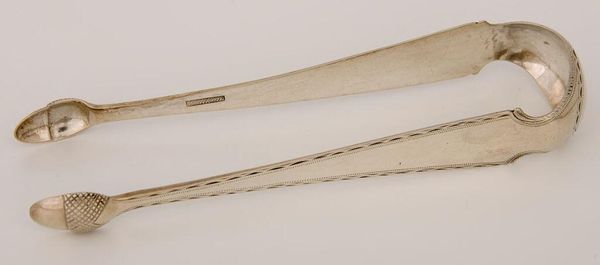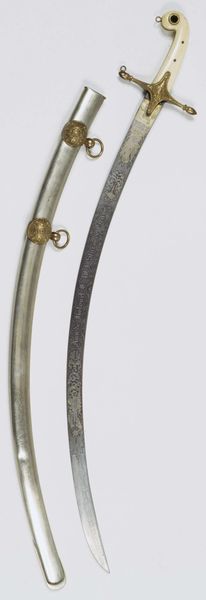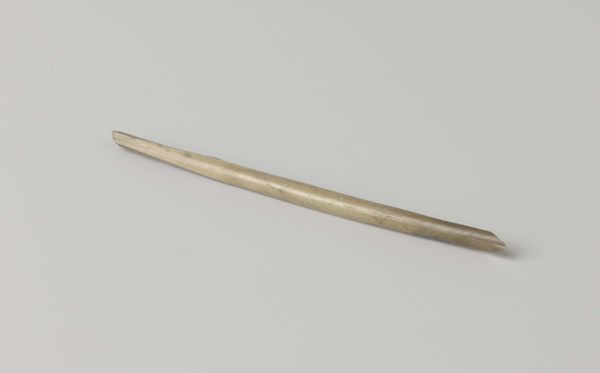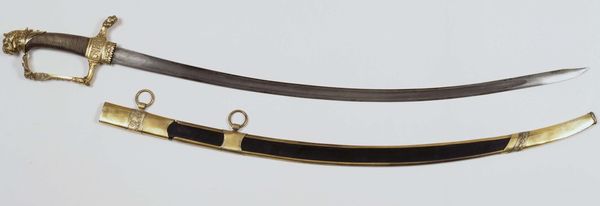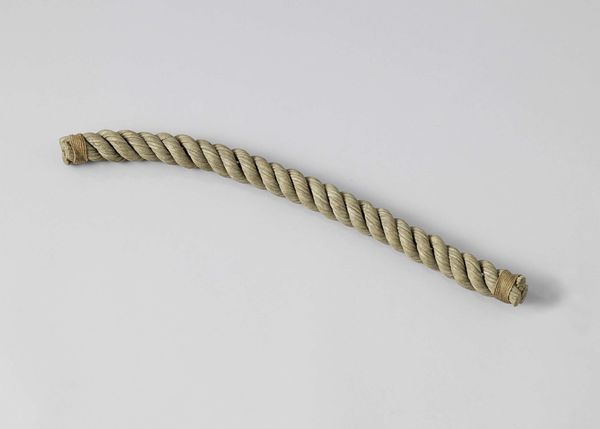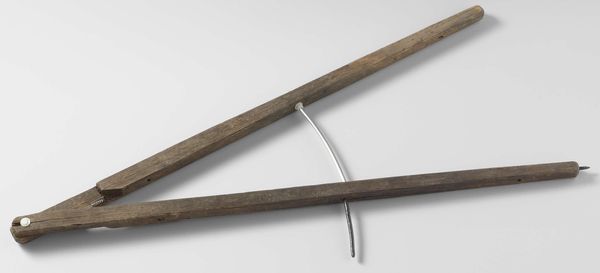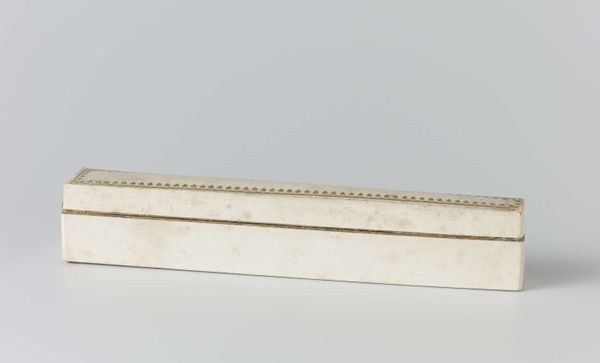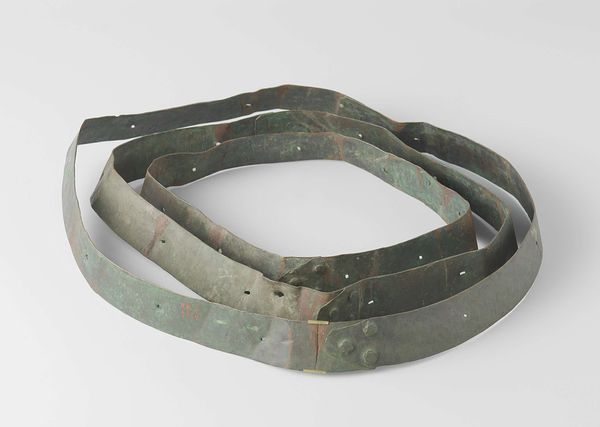
metal
#
metal
#
decorative-art
Dimensions: 1.27 × 5.4 × 38.1 cm (1/2 × 2 1/8 × 15 in.)
Copyright: Public Domain
Editor: We're looking at "Razor (Anniversary Tin)," dating from between 1850 and 1900, residing here at the Art Institute of Chicago. The material is metal, a simple metalwork tool from a bygone era. I immediately notice the elegance of the curve despite the visible wear, and how light interacts with its surface. What strikes you about its form and presentation? Curator: Initially, observe the dichotomy present in its metallic composition. It is cold yet holds a patina that speaks to human usage. Notice how its shape guides our eye, the opening mimicking a crescent moon. Editor: It's interesting to consider the curve, it’s sharp in its function yet soft in its appearance. How does the metal influence our perception of its purpose? Curator: Metal gives permanence and structure, allowing precision for practical uses. The form displays a sharp and elegant shape. Consider that in metalwork, each line conveys something about mass and surface. The lines, at their edges, determine volume, directionality, and presence in space. It asks the question about where function ceases and artistry begins. Editor: I hadn't thought of that intersection so directly. Curator: Indeed. I also wonder, is it about how the simplicity is timeless despite dating between 1850-1900. This era represents a fascinating cross-section between hand-craftsmanship and the rise of mass production. Editor: I've gained a deeper appreciation of the interplay between the material and how our gaze traces it. I suppose it highlights that visual examination can deepen appreciation of artwork. Curator: Precisely! By analyzing how art components are placed within the visual structure, art is better viewed with informed insight.
Comments
No comments
Be the first to comment and join the conversation on the ultimate creative platform.

